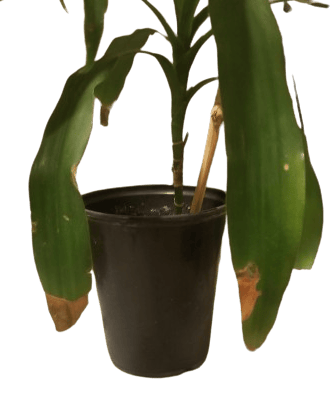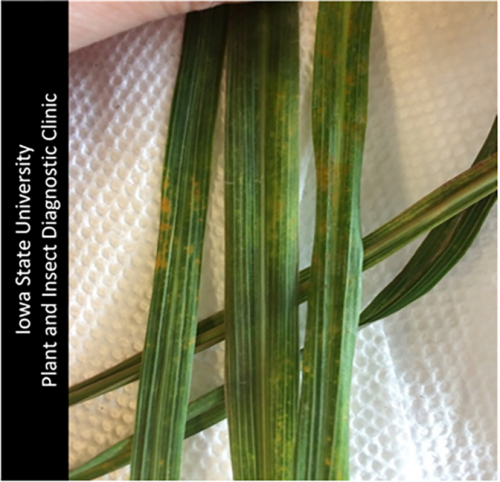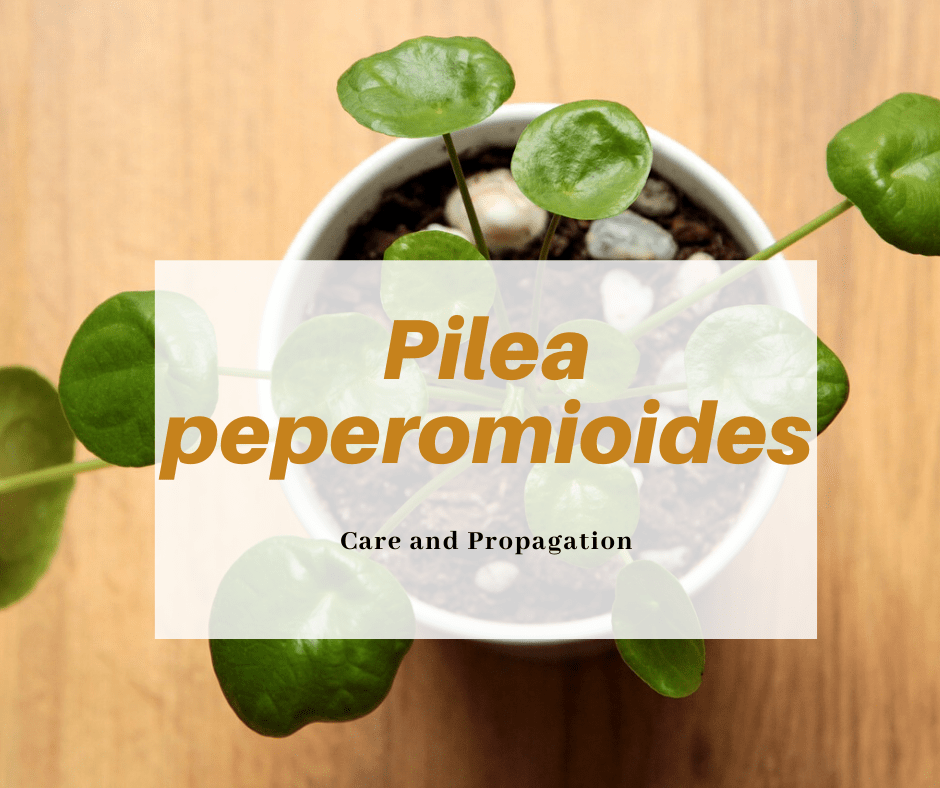This post may contain affiliate links. As an Amazon Associate we earn from qualifying purchases.
What’s ailing your plant? Read on to learn about common dracaena problems.
Dracaenas going through a sort of renaissance right now. There was a time a few decades ago when the plant was all the rage. Then, enthusiasm died down as the plant became more common.
Yet, today, it’s crazy popular again, and for good reason. There are far more cultivars than in years past and it’s such an easy grower.
This doesn’t mean there aren’t common dracaena problems. Not at all. But few are life-threatening and more our fault than the plant’s.
Diagnosing dracaena problems isn’t easy
Many pathogens can cause similar symptoms. Some species in the Fusarium genus (fungi), for instance, can cause a multitude of symptoms.
“These include leaf spots, cutting rot, crown rot, wilt, bulb rot, and root rot,” according to A.R. Chase at greenhousemag.com.
While there are certain common problems of dracaena, keep in mind that the symptoms you see may mimic those of another disease or cultural problem.
Please use the following of an overview of likely causes, not a definitive diagnoses.
Dracaena problems: brown leaf tips and margins
This is the problem we are most often asked about: Why are my dracaena’s leaf tips turning brown?
It typically starts at the tips but then ends up sliding down along the leaves’ edges. Brown and crispy and very unattractive.
Many online garden writers chalk it up to insufficient humidity, while others use the old familiar fallback of “either under or overwatering.”
While those excuses have their merits, the most common reason for brown leaves, especially in dracaena and most especially at the tips and edges, is fluoride.
Yup, fluoride.
Those scorched splotches on the leave’s edges and tips are a classic symptom of fluoride toxicity.
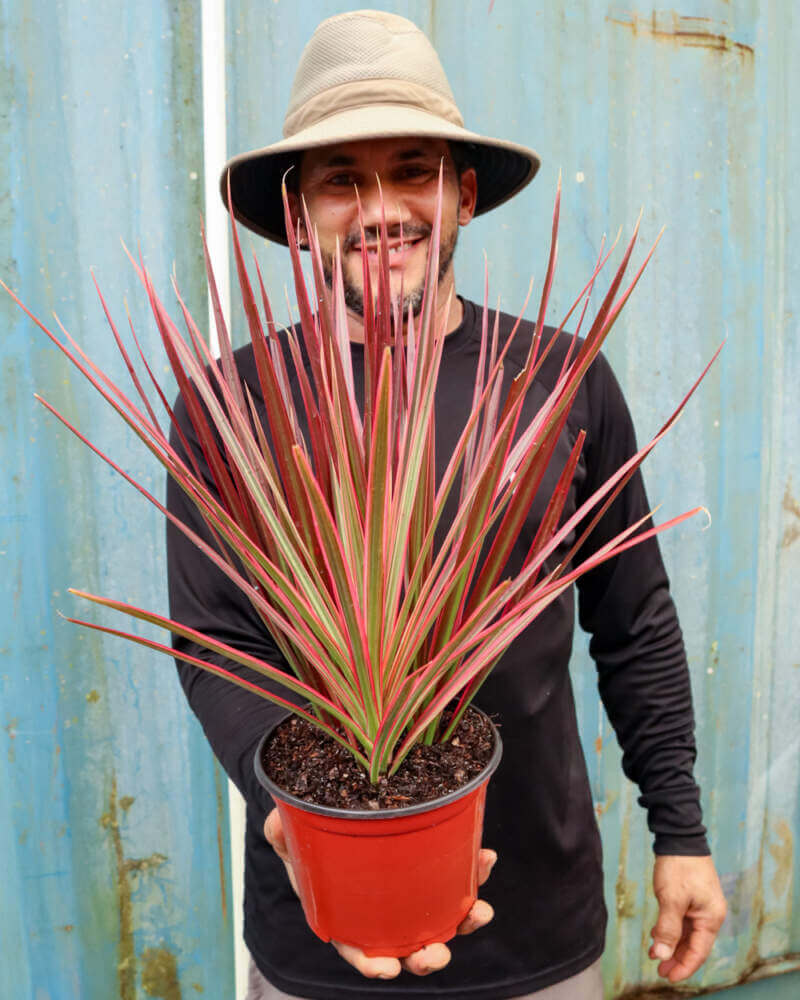
How to “cure” fluoride toxicity in dracaena
- Water the plant with distilled water or rain water (learn how to set up a water collection system here).
- Repot the dracaena into a potting mix without perlite (it contains fluoride).
- Check the pH of the soil after repotting and ensure it is as close to 7.0 as possible. For an 8-inch pot, add 1 tablespoon of dolomitic lime (which is basically calcium carbonate) to the surface of the soil and mix it in to the top inch or so. Do this once a year. Calcium “… ties up the fluoride molecules so they can’t get into the plant tissues,” according to Marlie Graves at newprocontainers.com.
- Avoid fertilizers with fluoride and superphosphate. Use fertilizer that contains “… nitrogen in the form of nitrate instead of ammonium, and contains calcium,” according to Robert Pavlis, owner of Aspen Grove Gardens in Ontario, Canada. Remember, calcium is critical.
That said, fluoride may not be the culprit in your plant’s browning leaf problems. If the aforementioned “cure” doesn’t work, consider other causes.
Check this list of fluoride sensitive houseplants to find out if others among your collection need help too.
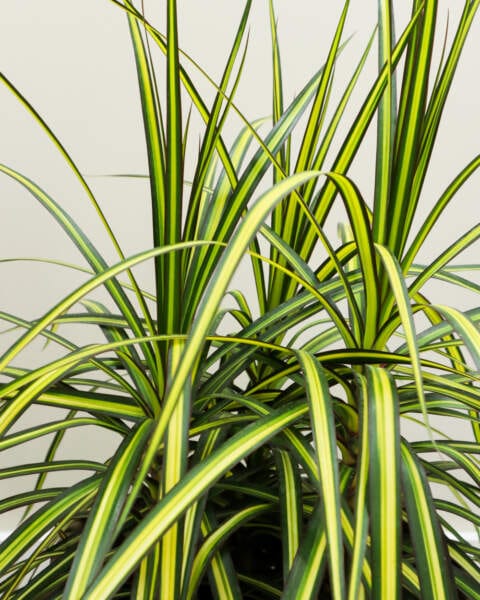
Other causes of dracaena leaves with brown tips and margins
Humidity? Perhaps. Among the places from whence this plant hails is Central Asia, which has an arid climate. But, it also came to us from some tropical and semi-tropical regions.
If you are convinced this is the problem, get a humidifier and place it near the plant.
It could also be caused by a buildup of salts caused by the misuse of fertilizer. Never fertilize dry soil, never over-fertilize, don’t fertilize a stressed plant and don’t fertilize too often.
Before I gifted it to my sister when I moved, I had my dracaena for about 12 years. It grew to nearly 6 feet tall. I rarely watered it, never fertilized it and I lived in the desert with no humidifier in my home.
The only thing that cleared up the brown tips on my dracaena was distilled water. I also repotted it once in a soil mixture without perlite.
Yes, that’s what you call “anecdotal evidence,” but there you have it.
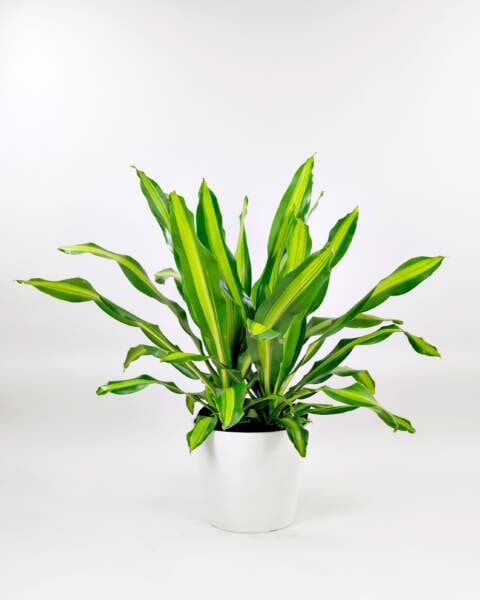
Dracaena problems: yellow leaves
Have you fertilized the plant lately? If, instead of brown, your dracaena’s leaf tips and margins are turning yellow, it may be from fertilizer burn.
Dracaena doesn’t require as much fertilizer as many other houseplants. Try backing off a bit to see what happens.
If your dracaena has variegated foliage that is yellow and the variegation is pale, try giving the plant a bit more light.
Are the yellow leaves looking a bit droopy? You may want to cut back on how frequent you water and check the bottom of the canes for root rot. There’s no cure for this one so buy yourself a brand new dracaena.
Yellow spots and splotches on dracaena leaves
Remember the section at the start of this discussion about the challenges and importance of correctly diagnosing plant problems?
This problem, yellow spots, streaks or splotches on the dracaena’s leaves is a perfect case in point.
Take a look at this D. indivisa foliage.
At first glance, the problem was diagnosed as “… a disease symptom (caused by an infectious agent or pathogen),” according to Lina Rodriguez-Salamanca with Iowa State University’s Plant & Insect Diagnostic Clinic.
“But upon closer examination,” she continues, “we observed spidermites [sic].”
Naturally, the treatment for a spider mite infestation is vastly different from that for a disease.
Had she not looked closer, however, who knows what would become of that particular dracaena?
If you discover that your yellow dracaena leaves are the result of spider mites, use any of the following to get the infestation under control:
- Neem oil
- Burkholderia spp strain A396 A bio pesticide
- Horticultural oil
These are contact killers so ensure that you spray directly on the spider mites. Repeat every three days, or according to package instructions, until the infestation is gone.
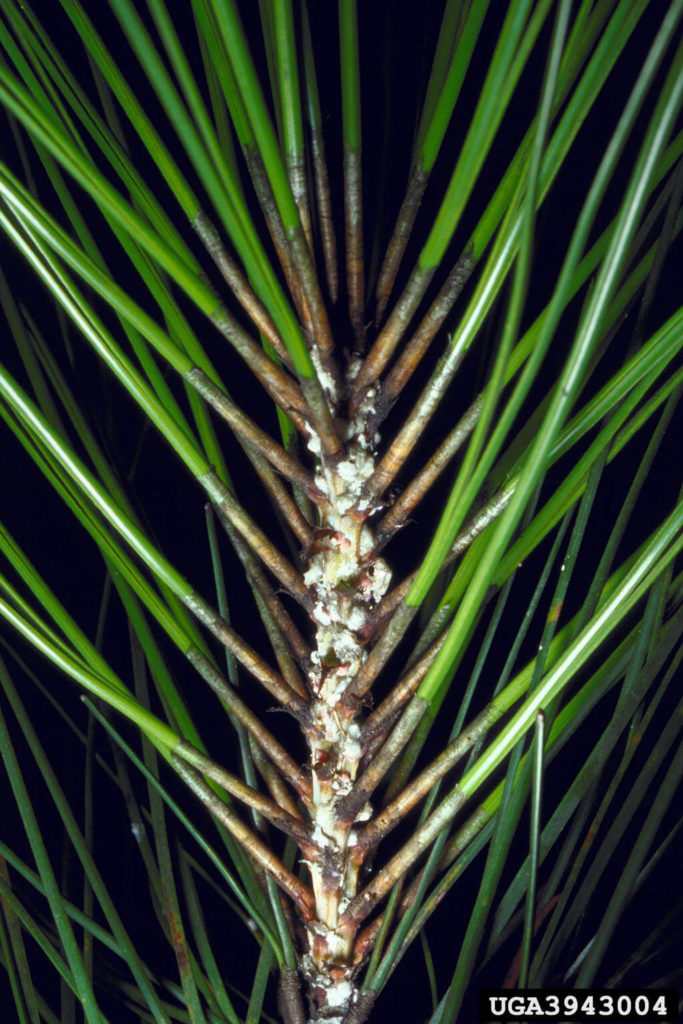
Other dracaena pests
Plant pests, especially early in an infestation, can be hard to see. Most are tiny and until there is a whole gang of them they pretty much go unnoticed.
We’ve covered spider mites, which by the way you can identify easily if there is spider-like webbing on the plant.
Mealy bugs are common on a lot of indoor plants. This is my nemesis. For some reason they always find my plants and they’re stubbornly difficult to get rid of.
Mealy bugs, for those yet to have the “pleasure” of dealing with them, are small, soft, white bugs and members of the scale family.
Their bodies are covered with wax and they have the ability to reproduce without, you know, “doing it.”
Mealy bugs damage dracaenas (and other houseplants) by sucking the juices from the plant’s vascular tissue. They also leave behind a substance called honeydew which can build up and attract sooty mold.
If you have just a few mealy bugs, dip a cotton swab into rubbing alcohol and dab each bug. You’ll see them die immediately.
Larger infestations are challenging, to say the least. The waxy coating on the mealybug is almost impossible to penetrate with contact insecticides.
If you can, take the dracaena outdoors and spray it off with a blast from the hose. Do this for several days and you may just get it under control.
Dracaena diseases
Her is another question we frequently field: How do you treat leaf spot disease on dracaena?
If new foliage develops red or tan spots with yellow halos at the base of the leaves, it is most likely suffering from a disease caused by Fusarium moniliforme, a fungus (Gary W. Moorman, Professor of Plant Pathology, Penn State Extension).
Apply a fungicide, such as Mycostop, a biofungicide, which lists Fusarium as one of the fungi it controls.
It’s a bit pricey, but it controls many of the more common fungal pathogens.
Other fungicides proven to work on this fungal pathogen include chlorothalonil, mancozeb, or tebuconazole as the active ingredient.
When you’re in the market for a new dracaena, consider purchasing one that has proven resistant to F.moniliforme:
- Dracaena deremensis ‘Compacta’
- Dracaena deremensis ‘Lemon Lime’
- Dracaena sanderana ‘Borinquensis’
- Dracaena sanderana ‘Gold’
Dracaena is toxic to dogs and cats. “Saponin is the toxic chemical compound in this plant. If this plant is ingested, vomiting (with or without blood), appetite loss, depression, and/or increased salivation can occur. Affected cats may also have dilated pupils.” (ASPCA)
Mention of a fertilizer or pesticide, or use of a pesticide or fertilizer label, is for educational purposes only. Always follow the product’s label directions attached to the container you are using. Be sure that the plant you wish to treat is listed on the label of the pesticide you intend to use. And observe the number of days between pesticide application and when you can harvest your crop.

